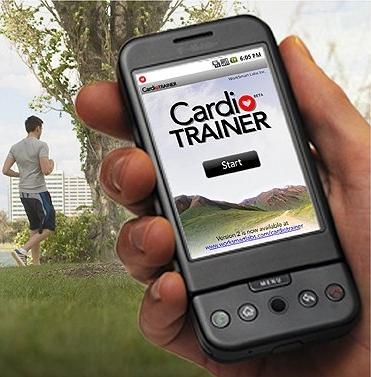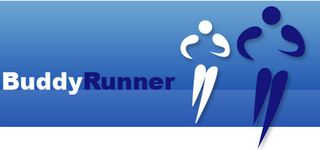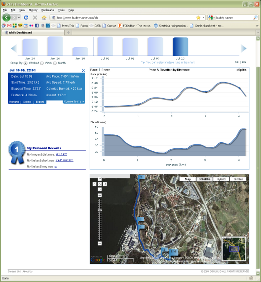Since I got my HTC Magic phone, the second generation Android operating system from Google and a lovely phone I have worked out using two different softwares that I would like to share.
These softwares are CardioTrainer and BuddyRunner, two wonderful applications to help you run well when doing exercise. Both offer similar features and are mainly aimed at runners that want to keep statistics on their exercise and perhaps also their competitions.

But what do they do? To make a long story short they are both personal trainers and logging instruments that can upload your running data to a web site where you can review what you have done and compare runs over time.
They are using the GPS in the phone to log your position periodically and thus can calculate your speed. They also measure the time and therefore knows at all times your speed and pace, the distance you have ran so far and in what time you did it. If you are using earphones and listening to music on your Android mobile as you run they will muffle the music or silence it completely and announce the running data periodically.
Feature-wise they are very similar, CT offers more settings to smooth out GPS positions during a run which can be good if you get bad measurements occasionally but won’t really help much in the long run, so to speak, but after testing the two producs side-by-side I can only conclude they are very similar in the distance they measure when running. The distance on both of them is perhaps a bit on the conservative side compared to distance measured on map or with a really good outdoor GPS (Magellan eXplorist XL) which shows a slightly longer track most of the time. Not certain why this is but they seem to be on the conservative side. My 2 km track registers as 1 850 meters roughly and that is 7.5% on the conservative side.
CT has a huge disadvantage for us Europeans, the tracks it records are shown in metric units on the handheld if you set it up to do so, but on the website everything is by imperial measurements which is really sad because it is otherwise a very good application. I have written them and they are looking into developing it. In fact there’s been two new versions of CardioTrainer released recently both with some small improvements.

BuddyRunner however has a really wonderful web site where you can see the run on a Google Maps interface, statistics on your run such as pace for each part of the run, and elevation. It is interesting to see the elevation go up and the pace time per km increase at the same time. You can compare several runs (up to three) download your running track and it keeps tracks of your records, longest, fastest and so on. Over all it is a much more developed web site than CardioTrainer has. However the application on the handheld is less sophisticated, it does not have the same filters and settings as CardioTrainer does and when it speaks to you it always abruptly pauses the music, the CardioTrainer can lower the volume but keep the music running which is better if you are trying to keep your pace to the music.
In the phone however both applications are very similar however and the settings screen also offers settings to change the announcer frequency and the contents of the announcing messages. BuddyRunner performs well int he background but CardioTrainer wants to run in the foreground, otherwise it pauses. CardioTrainer can also automatically play a certain playlist of music for you while BuddyRunner just leaves the music player alone.

Sharing your things with others is easy on the BuddyRunner, the application and webside can write RSS feeds to your Facebook, Twitter or Friendfeed site and so on, you may show your dashboard to anyone you like, they can’t manipulate it unless you log in but they can leave a comment on your run if they want to.
CardioTrainer has a secret passcode to the webside, you can not display it without this code and when you enter the code you may also remove runs and modify the content, so you would not want to post that publicly. There is also right now no integration with Facebook, Twitter and similar sites, no RSS feeds and the tracks can not be downloaded from the site.
In the end the factor that is the most deciding one for me is the website. BuddyRunner has a much better web site and I love the feature that you can download your runs in GPX format to have them displayed on Google Earth or some similar mapping software if you like. Great stuff!





